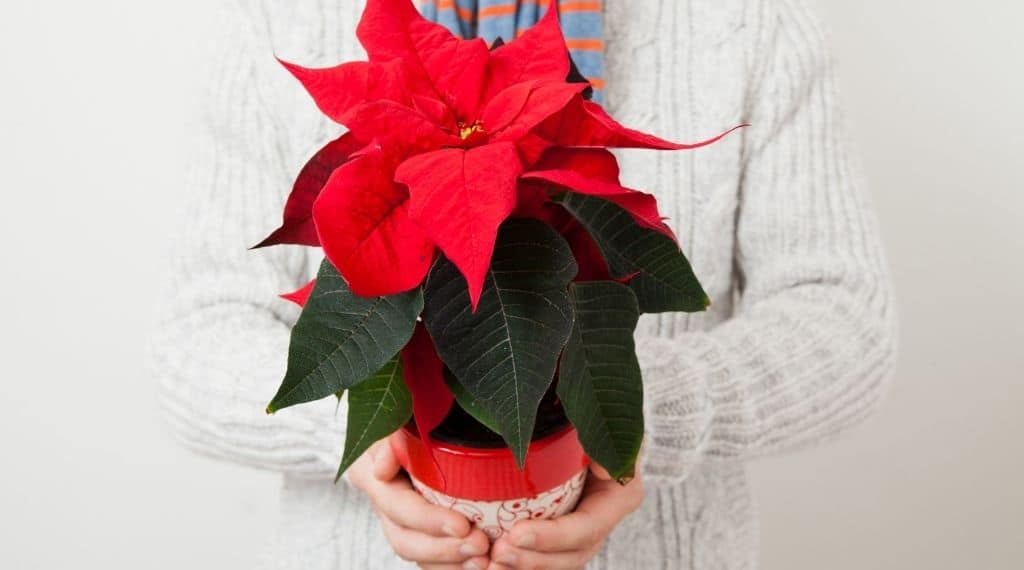Spring Indoor Plant Care Routine
As the days get longer and the weather warms up, your indoor plants are coming out of their winter dormancy and entering their active growing season.
Spring is the perfect time to refresh your plant care routine to help them thrive.
This post contains affiliate links. As an affiliate partner of various brands, we earn a little commission on qualifying purchases, at no extra cost to you. When you purchase through our links, you help our business to keep going. So thank you for your support! You may read our full disclaimer for more information.
From adjusting watering schedules to repotting and fertilizing, a few simple tweaks can encourage lush, vibrant growth.
In this guide, we’ll walk you through how to set up an indoor plant care routine for spring, covering everything from soil refreshes to pest prevention.
Spring into Plant Care: The Ultimate Indoor Routine for Thriving Houseplants
1. Assess Your Plants After Winter
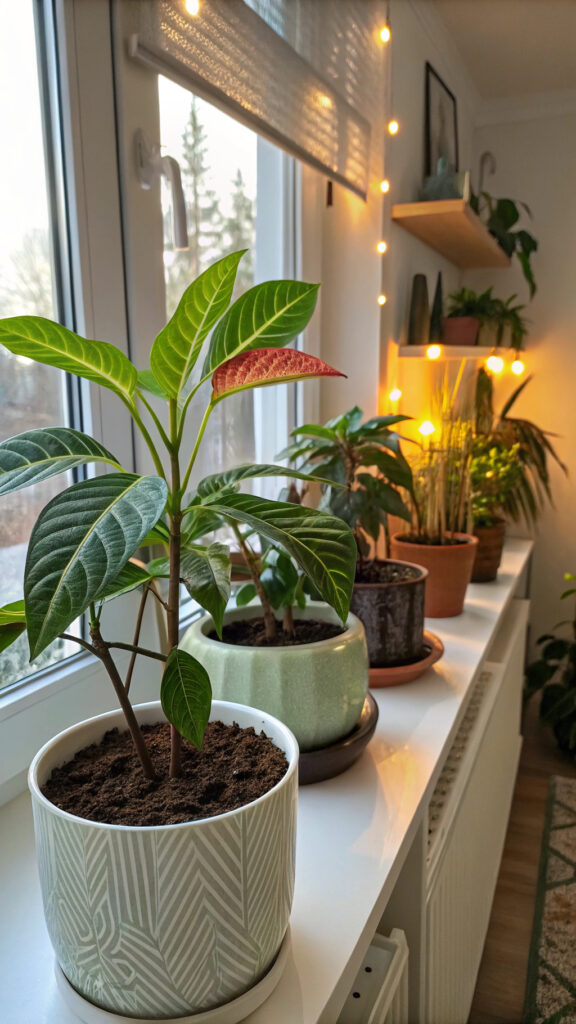
Winter can be tough on houseplants due to lower light levels, dry air, and less frequent watering.
The first step in your spring care routine is assessing your plants for any issues that developed during the colder months.
✔ Check for winter damage: Look for yellowing leaves, weak stems, or root rot. Trim away dead or dying leaves to encourage fresh growth.
✔ Inspect for pests: Warmer temperatures can bring an increase in pests like spider mites and aphids. Check the undersides of leaves for signs of infestation.
✔ Evaluate plant health: If a plant looks stagnant or unhealthy, it may need repotting or a nutrient boost.
2. Refresh the Soil & Repot If Needed
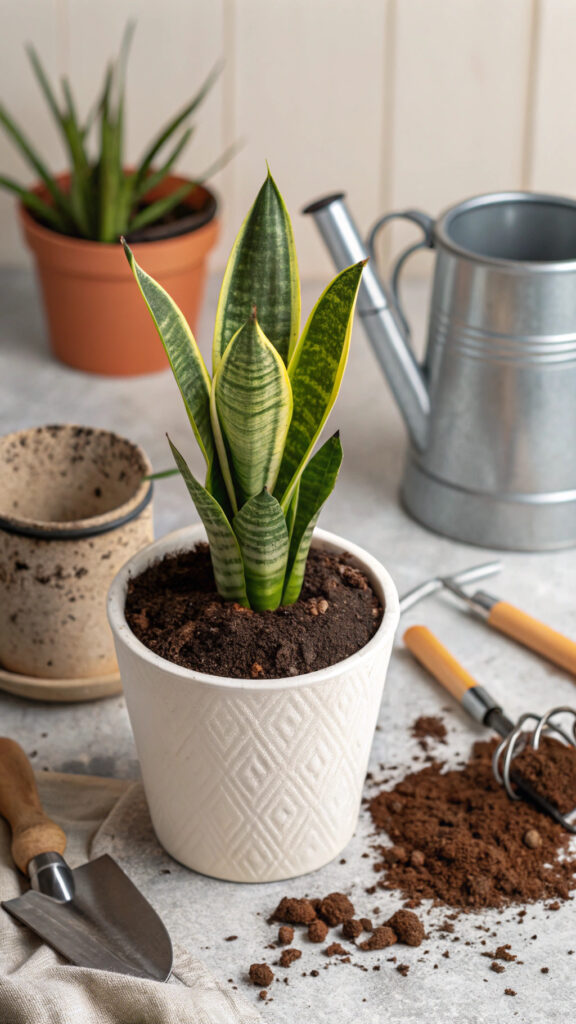
Spring is the best time to repot houseplants because they’re entering their active growth phase.
Not all plants need repotting every year, but here’s how to know if yours does:
Signs it’s time to repot: Roots growing out of drainage holes, slow growth, or compacted soil that dries out too quickly.
How to repot properly:
- Choose a pot that’s 1-2 inches larger in diameter than the current one.
- Use fresh, well-draining potting mix suited for your plant type.
- Gently loosen the roots and place the plant in the new pot at the same depth.
- Water thoroughly after repotting to help the plant adjust.
For plants that don’t need repotting, simply refresh the top layer of soil with fresh potting mix to replenish nutrients.
3. Adjust Your Watering Routine

In winter, plants require less water due to slower growth.
With spring’s increased light and warmth, it’s time to gradually increase watering to match their needs.
Related: 5 Best Self Watering Indoor Plants To Beautify Your Home
Best watering tips for spring:
- Test the soil: Stick your finger an inch into the soil—if it’s dry, it’s time to water.
- Water deeply but less frequently: Ensure water reaches the roots, but avoid letting plants sit in excess water.
- Use room-temperature water: Cold water can shock roots, especially in the early spring transition.
Watch out for signs of overwatering (yellowing, mushy stems) and underwatering (dry, curled leaves).
4. Increase Sunlight Exposure Gradually
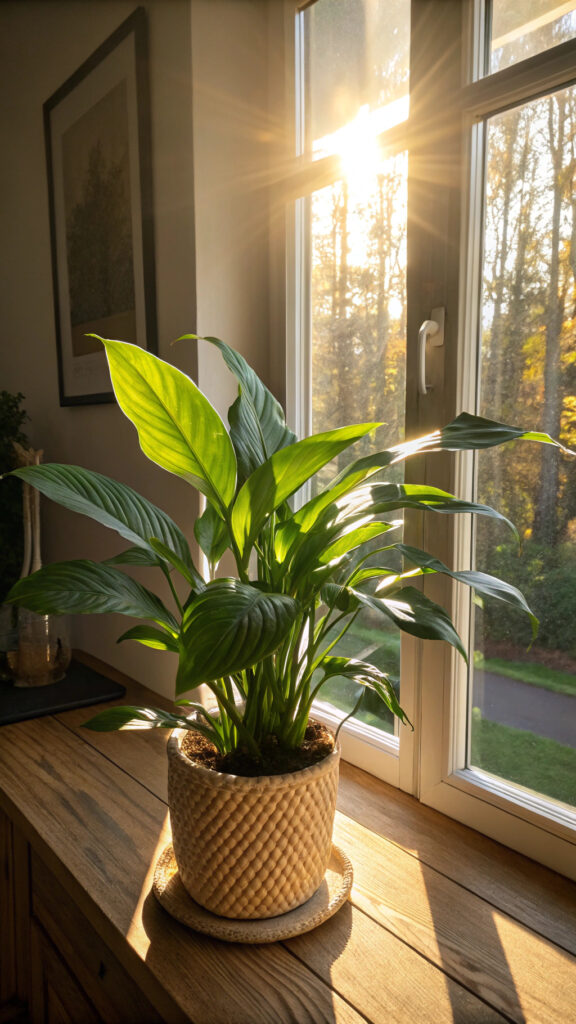
As days get longer, plants will naturally receive more sunlight.
However, abruptly moving them into brighter light can cause shock.
☀ How to safely adjust light exposure:
- Move plants closer to windows but introduce them gradually over a few weeks.
- Rotate plants weekly to ensure even light distribution.
- If sunlight is still limited, consider supplementing with a grow light.
5. Start Fertilizing for New Growth
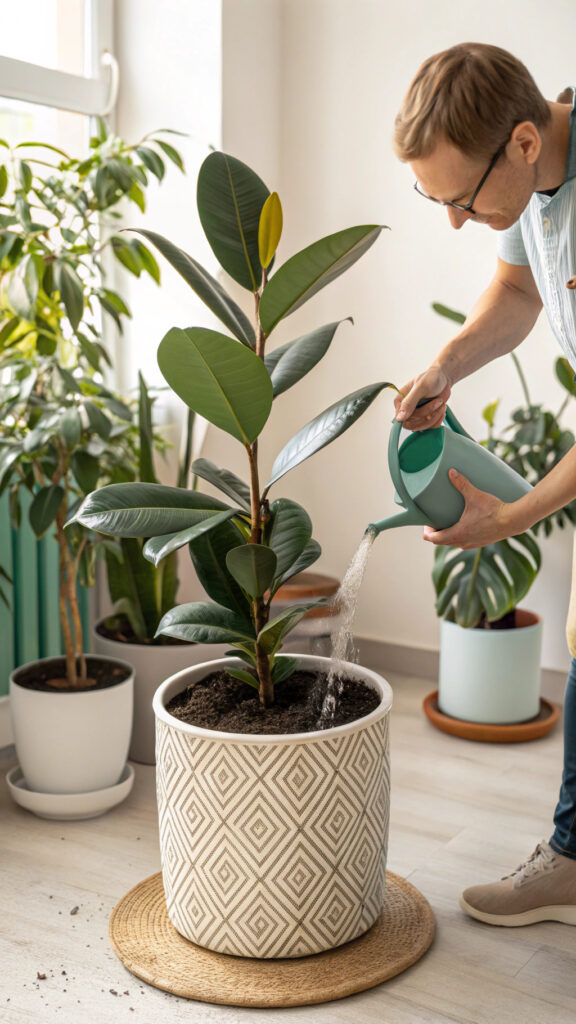
Spring is the ideal time to start feeding your plants after months of dormancy.
Related: How & When Can I Move Houseplants Outside Without Killing Them?
Fertilizing provides the essential nutrients needed for strong, healthy growth.
🌱 Fertilizing tips:
✔ Use a balanced liquid fertilizer (like a 10-10-10 or 20-20-20 formula) once a month.
✔ Dilute fertilizer to half strength for young or sensitive plants.
✔ Avoid over-fertilizing, which can cause burnt leaves and weak growth.
6. Prune & Trim for Healthier Plants

Pruning in spring encourages fuller, bushier growth by removing dead leaves and stems.
✂ How to prune properly:
- Use sharp scissors or pruning shears to make clean cuts.
- Remove yellowing or damaged leaves to redirect energy to new growth.
- Pinch off the tops of vining plants like pothos or philodendrons to encourage bushier growth.
For flowering plants, avoid cutting off new buds, as they may be preparing to bloom.
7. Spring Cleaning & Pest Prevention
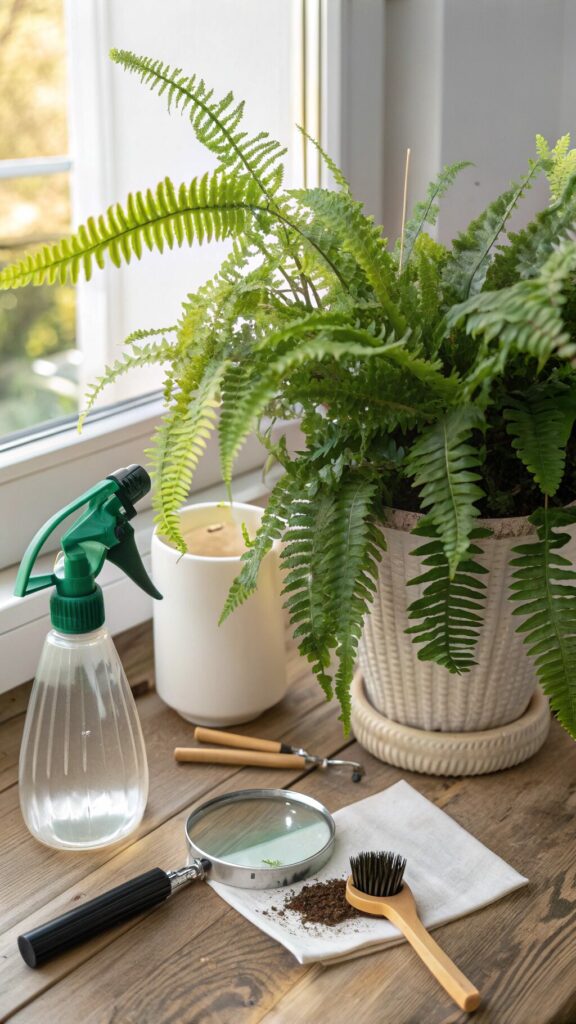
A clean environment helps prevent fungus, pests, and diseases from spreading among your plants.
Related: 5 Proven Techniques To Get Rid of Fungus Gnats in Houseplants
🧼 Spring cleaning checklist:
✔ Wipe leaves with a damp cloth to remove dust and improve photosynthesis.
✔ Wash pots & trays with mild soap and water to kill bacteria.
✔ Check for pests and treat early using neem oil or insecticidal soap.
If you see tiny whiteflies, aphids, or spider mites, isolate affected plants and treat them immediately.
8. Boost Humidity for Thriving Plants
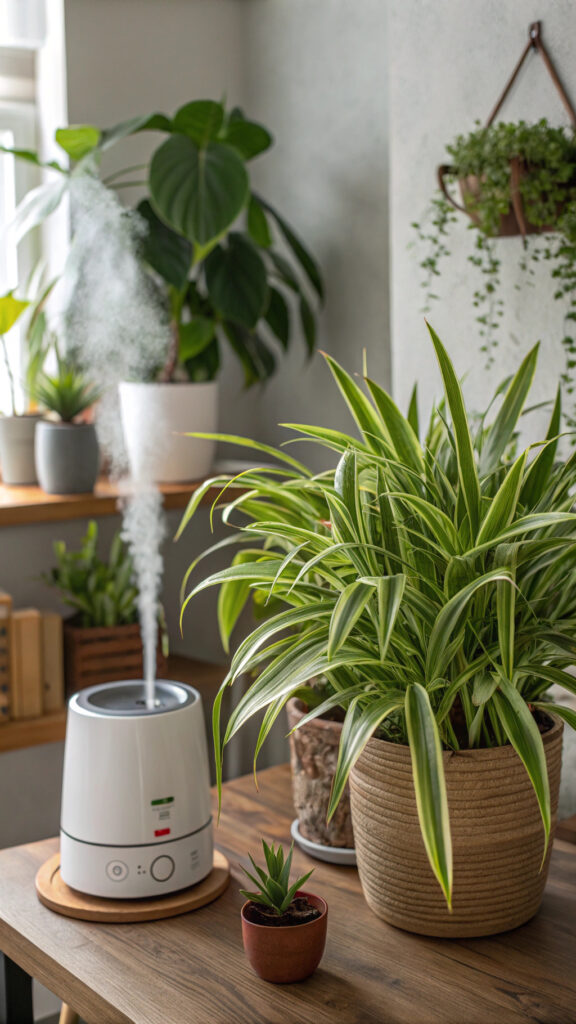
Spring brings higher humidity levels, which most houseplants love!
However, if you live in a dry climate, you may need to artificially increase humidity indoors.
💦 Easy ways to boost humidity:
✔ Group plants together to create a natural microclimate.
✔ Use a pebble tray—place a tray of water with pebbles under the plant.
✔ Invest in a humidifier if you have multiple humidity-loving plants (like ferns and calatheas).
9. Introduce New Plants to Your Collection

Spring is a great time to add new plants since they’ll adjust better to your home’s conditions.
Related: How To Decorate Your Apartment With Plants
🌿 Best beginner-friendly plants to buy in spring:
✔ Snake plant (low-maintenance, air-purifying)
✔ Pothos (thrives in various light conditions)
✔ Peace lily (great for improving air quality)
✔ ZZ plant (tolerant of neglect)
When bringing in new plants, quarantine them for at least a week to prevent spreading pests to your existing collection.
5 FAQs on How to Set Up an Indoor Plant Care Routine for Spring:
1. How often should I water my indoor plants in spring?
Spring typically means more sunlight and growth, so most plants will need more frequent watering than in winter. Always check the soil moisture before watering.
2. Do I need to repot my plants in spring?
Spring is an ideal time to repot if your plant has outgrown its pot or if the soil has become compacted. Look for roots growing out of drainage holes or slowed growth as signs.
3. Should I start fertilizing my houseplants again in spring?
Yes! As plants come out of dormancy, they benefit from regular feeding. Use a balanced houseplant fertilizer every 2–4 weeks depending on the plant’s needs.
4. Is it okay to prune indoor plants in spring?
Absolutely. Spring is a great time to prune leggy or damaged growth to encourage healthy new leaves and fuller shapes.
5. How can I help my plants adjust to more sunlight in spring?
Gradually move them closer to bright windows if they’ve been in low light during winter. Monitor for signs of sunburn or stress and adjust as needed.
Final Thoughts on Houseplant Care Routine for Spring
Spring is the season of renewal, and your indoor plants will thrive with a refreshed care routine.
By assessing plant health, adjusting watering and light, repotting when necessary, and introducing fertilization, you’ll set them up for strong growth.
Ready to refresh your plant care routine?
Start with one or two changes today!



